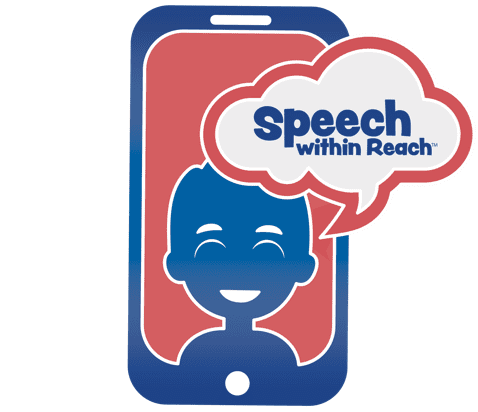Speech therapy is a broad and diverse field that supports people of all ages, backgrounds, and communication styles. One important area of focus is supporting individuals with autism. Speech therapists can play a valuable role by building social communication skills, supporting interactions across different environments, introducing and using AAC (augmentative and alternative communication), improving verbal and nonverbal communication, and so much more.

Every person deserves the tools and confidence to connect with others, express themselves, and navigate the world in a way that feels authentic to them. For individuals with autism, that may look different, and that’s not only okay, it’s something to be celebrated.
Let’s explore some of the meaningful ways speech therapy can support individuals with autism:
1. Honoring All Forms of Communication
Not all communication is verbal, and speech therapy embraces that. Whether someone uses spoken words, gestures, sign language, pictures, or AAC, the goal isn’t to push a certain way of speaking. It’s to support effective, meaningful communication in whatever form fits best for an individual.
Communication is about connection, and that comes in many forms.
2. Building on Strengths
Rather than focusing on “deficits,” speech therapists look for what the individual can do and build from there. A child who loves patterns might thrive with visual schedules. Someone who is highly detail-oriented may be great at storytelling or descriptive language. Therapy becomes a space where strengths are celebrated and used as building blocks.
Here are some areas SLPs target in therapy depending on individual needs, according to the American Speech-Language-Hearing Association (ASHA):
- Socializing with others in different settings
- Using a variety of communication supports
- Taking turns in conversation
- Transitioning from one task or setting to another
- Accepting change and expanding interests, including trying new foods and activities
- Reading and writing skills
3. Encouraging Self-Advocacy
Everyone has a right to express their needs, preferences, and boundaries. Speech therapy helps individuals with autism learn self-advocacy skills. This can include asking for a break, saying “no,” or expressing feelings in a safe and supported way. This is a valuable characteristic in communication that can be supported through therapy sessions.
4. Creating Safe and Affirming Spaces
Therapy should be a space where autistic individuals feel accepted, understood, and valued. That might mean using sensory-friendly materials, avoiding overwhelming environments, or taking time to build trust. Therapists work to honor sensory needs, emotional regulation styles, and processing time, which allows for meeting the person where they are.
5. Promoting Social Connection
Some autistic individuals thrive in groups, while others prefer one-on-one connections or solo time. Speech therapy doesn’t aim to change personality; it assists in making social interaction easier and more enjoyable if and when the individual wants it. This could involve practicing conversational skills, understanding social cues, or role-playing real-life scenarios, all guided by the person’s goals.
6. Valuing Neurodiversity
The Cleveland Clinic defines neurodiversity as, “a word used to explain the unique ways people’s brains work. While everyone’s brain develops similarly, no two brains function just alike.” Speech therapy is evolving alongside our understanding of neurodiversity. Therapists are learning to unlearn outdated practices and embrace the idea that neurological differences are natural and valuable. The focus is shifting from “normalizing” to supporting individuality.
7. Partnering with Families and Caregivers
No one knows a child or adult better than their loved ones. Speech therapists work closely with families and caregivers to ensure support strategies align with home life, culture, and goals. This partnership helps carry over communication skills into everyday moments, such as school, work, etc.
According to ASHA, SLPs can teach families and/or caregivers how to play with their child while teaching skills including:
- Playing without words to develop trust
- Talking about what the caregiver as well as the child are saying/doing
- Adding extra words for what a child has said (modeling language)
- Providing lots of positive opportunities to practice a new skill
- Providing enough assistance to complete a task while still letting the child do it themselves
- Providing sensory support
Celebrating Every Voice
At the heart of it all, speech therapy for individuals with autism is about celebrating communication in all its forms. It’s about assisting people in sharing their ideas, connecting with others, and feeling confident in who they are as their authentic selves.
The goal is never to “fix” anyone; it’s to lift them up.
Looking for support that honors neurodiversity?
Speech therapists are here to walk alongside you or your loved one with respect, encouragement, and belief in your unique strengths. Every voice deserves to be heard.
_________________________________________________________________________________________
https://my.clevelandclinic.org/health/symptoms/23154-neurodivergent
-HANNA MOELLER, Illinois State University, Senior Research and Marketing Intern
-NICOLE BUTLER, M.S., CCC-SLP/L (ASHA Certified and licensed Speech-Language Pathologist, Founder and Executive Director of Speech Within Reach.)
SPEECH WITHIN REACH provides in-person and virtual telehealth speech therapy for children and adults. We are happy to support your speech therapy needs. Please feel free to reach out to us.
SPEECH WITHIN REACH
1-800-689-8211
www.speechwithinreachtherapy.com
admin@speechwithinreachtherapy.com
